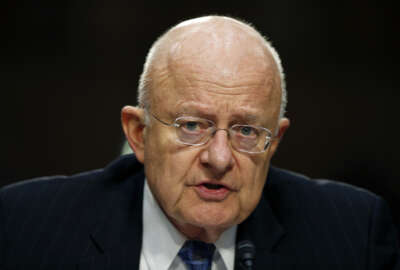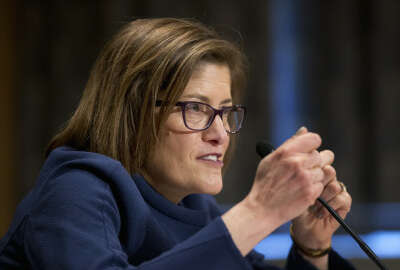
White House summit gathers actionable ideas to recruit more diverse federal workforce
The White House hosts agency leaders to develop concrete, actionable ideas on developing a more diverse, inclusive federal workforce.
When it comes to recruiting, hiring and developing a diverse and inclusive federal workforce, the Obama administration wants to help agencies stop “talking the talk” and start “walking the walk.”
A group of agency and private sector leaders met at the White House Nov. 28 to discuss concrete, actionable ideas for developing a more diverse federal government.
“I’d argue that what we’re trying to do today is move beyond training and raising awareness to start to use hard workforce data to analyze the equity health of government agencies,” said Beth Cobert, acting Office of Personnel Management director, during the White House Summit on Diversity and Inclusion. “We need to analyze how equity and inclusion and opportunity is being built into the fabric of all business functions and used to assess and manage risk.”
“The bottom line is a very simple one: we cannot afford to leave talent and resources on the table,” she added. “We cannot afford to have that talent in the room and to not hear their voice.”
Specifically, the summit’s leaders wanted to develop new ideas for better training on explicit, implicit and unconscious discrimination that will change employees’ behaviors.
“What our task force looked at was, how has training worked so far? Our co-chairs of that task force found that much of the training that was being conducted was actually not effective,” said Jenny Yang, chairwoman of the Equal Employment Opportunity Commission. “Training is valuable and necessary, but it needs to be done well. It needs to have a culture that builds on that training to affect how decisions are actually made in that organization.”
The group agreed promoting a diverse and inclusive workforce should go beyond training and roundtable discussions. The key, Yang said, is for career employees to present a data-driven business case to their leaders on why a more diverse, inclusive workforce will better serve an agency’s mission. We know that leaders play an incredibly important role in setting the tone for an organization, and it is not enough to believe it’s important,” she said.
The Office of Management and Budget (OMB), for example, saw value in looking at hard data as a lever for change.
“[An OMB staffer] really emphasized this in pulling together a really comprehensive set of data about OMB, about where we are and where we aren’t on diversity and inclusion, looking at it from many different perspectives, different groups of folks in the agency,” OMB Director Shaun Donovan said. “It was stark, frankly. It helped folks in the agency say, ‘We have a challenge here.'”
Getting buy-in from leadership shouldn’t just include one person or office, Cobert said. Instead, developing a diverse and inclusive mindset should be ingrained into the organization. “Building a diverse and inclusive workforce is not a task that should be delegated,” she said. “It cannot be left to the Diversity and Inclusion Office or one person designated to handle that work. It is a core principle of human capital, and it is essential to the success of every project, every team, every organization.”
In addition, summit leaders also gathered ideas and best practices from some agencies who have already made strides in recruiting and promoting a more diverse workforce.
The Energy Department (DOE), for example, has field offices located across the country. The department’s leadership began a series of listening tours to ask their employees “tough questions” about this topic.
“We initiated a new round of listening, and that meant [involving] leadership,” said Elizabeth Sherwood-Randall, the department’s deputy secretary. “The secretary of Energy and I asked for opportunities to talk with people, not in a structured way, not with us sitting at a podium, not with lots of intermediaries, but actually putting ourselves in the midst of our workforce and hearing from them.”
Based on those conversations, the department launched a new program called “One DOE.” Specifically, it started a program with minority-serving colleges and institutions to tell them about opportunities at the department. It also began offering professional and career-based training for those students who may one day become Energy employees.
“We all own this responsibility,” Sherwood-Randall said. “It cannot only be led by or driven by those who feel excluded. It actually has to be led by those who have been included in their life experiences.”
Summit leaders also discussed how agencies can institutionalize these conversations and carry them forward into the next administration, a concern Donovan said particularly worries him.
“Leadership matters. I can imagine that folks are feeling some uncertainty at this time of transition to a new administration,” he said. “There’s always uncertainty. Given the nature of this campaign on this issue of diversity and inclusion, I’m sure there’s more than the usual amount of concern and questions about that transition. [It’s] all the more reason why as career leaders, you all should be thinking about how you step up, how you join together in the coming months and years to make sure this that this issue gets carried on.”
Sherwood-Randall said she hopes agency transition leaders will gather their best practices on developing a more diverse and inclusive workforce together in a report, which OPM would hand off to the Trump administration.
Copyright © 2025 Federal News Network. All rights reserved. This website is not intended for users located within the European Economic Area.
Nicole Ogrysko is a reporter for Federal News Network focusing on the federal workforce and federal pay and benefits.
Follow @nogryskoWFED
Related Stories






